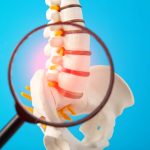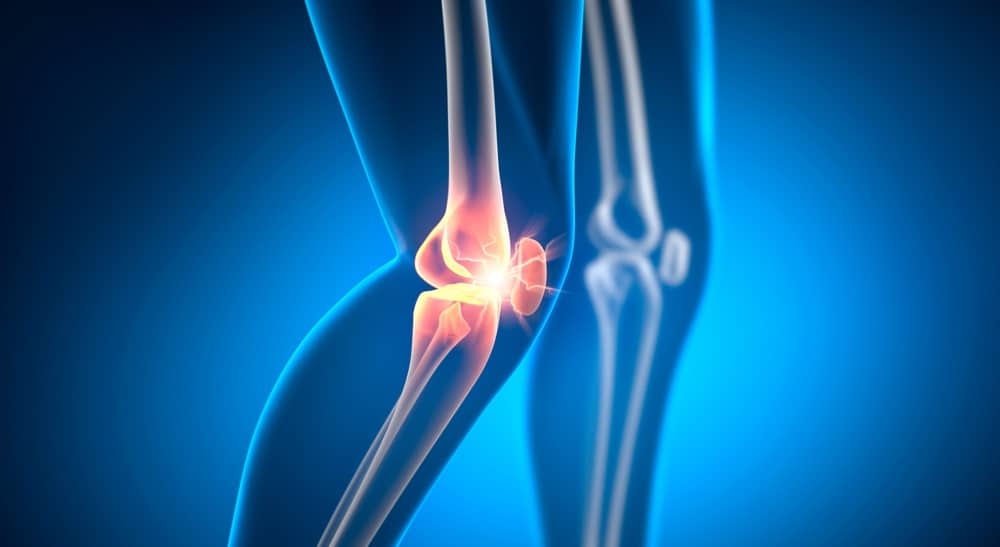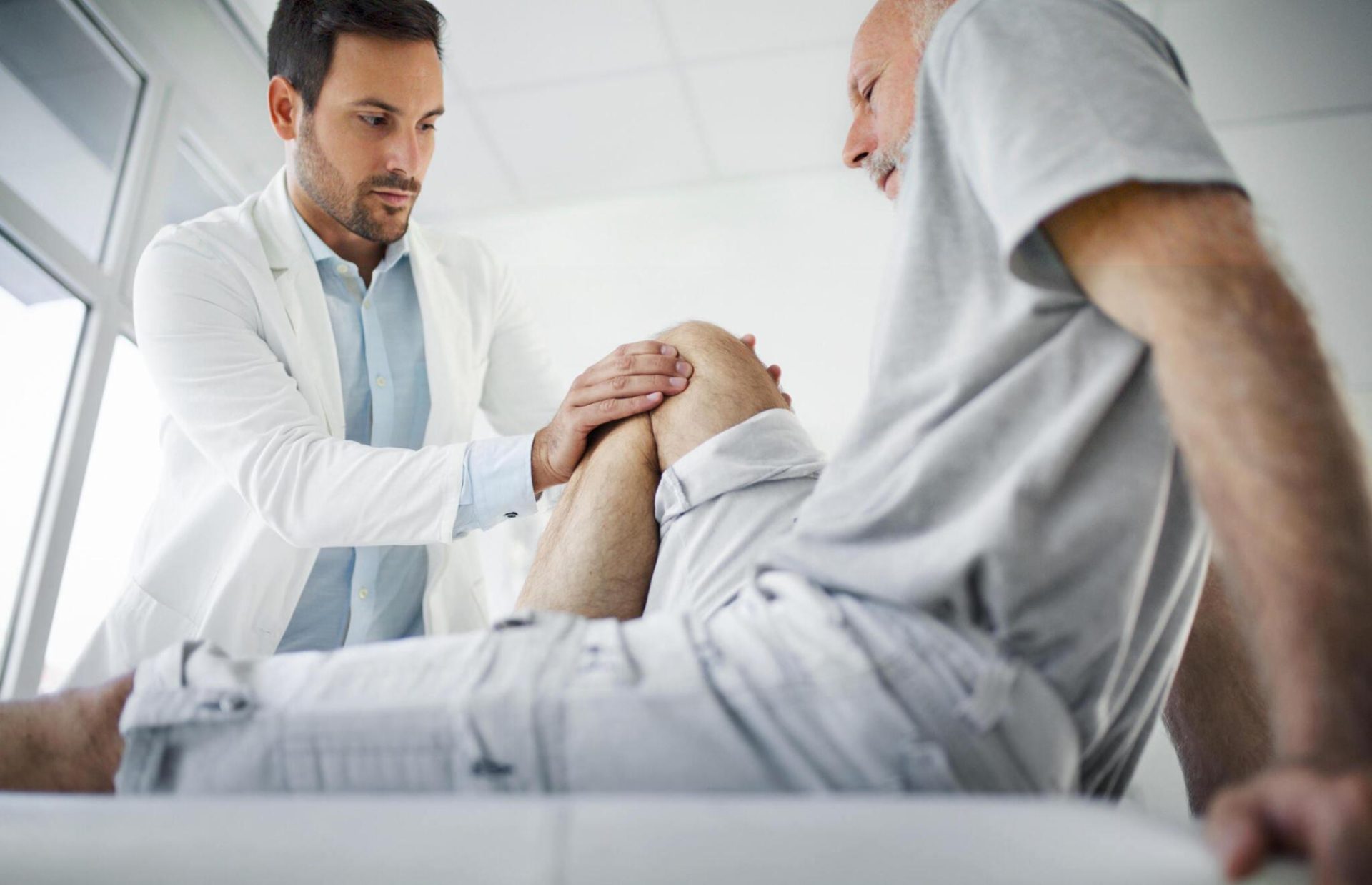- Home
- About Us
- Book Appointment
- Treatments
- Alzheimer’s Disease
- Anti-Aging
- Autism
- Autoimmune Disorders
- Back Pain
- COPD
- Crohns Disease And Ulcerative Colitis
- Erectile dysfunction and Penis enlargement
- Fibromyalgia
- Hip Pain
- Knee Pain
- Lupus
- Lyme Disease
- Multiple Sclerosis
- Muscular dystrophy
- Parkinsons Disease
- Peripheral And Diabetic Neuropathy
- Post Cancer Treatments
- Post Stroke Recovery
- Psoriasis
- Rheumatoid Arthritis
- Shoulder Pain
- Join The Club
- Aesthetics
- Blog
- Contact Us
About 1 million US citizens experience meniscus tears every year.
Moreover, 9 out of every 1000 military personnel in the US go through meniscal tears during active service.
This type of knee injury is uncommon in children less than 10 years old.
Middle-aged people more than 40 years old and athletes have a higher risk of such injuries.
Surprisingly, medial meniscus tears are more prevalent than lateral tears.
People around the age of 20-29 years cover the highest percentage of meniscal tear injuries.
Let us find out how meniscus tears affect people and the role of stem cell therapy in healing this type of injury.
All About Meniscus Tears
We will identify the location of the meniscus. Also, we will discuss the causes of this type of injury. Furthermore, this section will explore the usefulness of conservative and surgical treatments to heal meniscal tears.
Understanding the Meniscus: Anatomy and Function
The meniscus is a C-shaped cartilage found in the knee joints. There are 2 meniscus in each knee.
There are three stages of meniscus tears. The first 2 grades are non-serious. However, an arthroscope test can detect the accuracy of a grade 3 meniscus tear.
The meniscus covers 70 percent of the articular surface of the tibial region.
This cartilage helps to load transmission and absorb shocks through the knee joints. The menisci improve the mechanism and movement of the knee joints.
The menisci has a composition of DNA, water, glycosaminoglycan, and collagen. It is a complex structure of different layers. Synovial fluid transports through microcanals within the meniscal tissue. It nourishes the articular cartilage.
The meniscus contains proprioceptive mechanical receptors that regulate the sensory functions of the knee joints.
Causes
Contact and non-contact injuries are the most common reasons for this type of knee damage. Moreover, degenerative diseases also increase the chances of this injury.
Surgery vs. Conservative Management for Meniscus Tears
The patient’s severity of the meniscal tear determines if they need conservative or surgical treatment.
Conservative management is appropriate for age-related tears.
Some conservative treatment techniques include ice, elevation, pain medicines, knee brace, and physical therapy.
Surgeries are essential for severe meniscal tears to improve knee function. Also, it helps to avoid long-term complications like osteoarthritis.
Surgical interventions are appropriate if conservative treatment does not help patients to return to daily activities.
Additionally, surgery options to completely or partially remove the menisci are also there. Patients can resume sports activities within 4-6 weeks of the surgery.
The meniscal tissue is hypocellular and avascular. This enables self-healing if damage occurs.
What Are Stem Cells?
Stem cells act as the repair system within the body. These are a set of cells that convert into different types of cells within the body. For example, stem cells transform into brain cells, joint tissues and cells, liver cells, insulin-producing cells, and cells in the lungs.
Different Types of Stem Cells
There is a dynamic range of stem cells found in the human body. The most prominent include –
- Mesenchymal Stem Cell (MSC) – Sourced from the bone marrow or human umbilical cord tissues (Wharton’s Jelly), these cells can differentiate and migrate. The multipotent cells are predominantly used for regenerative therapy.
- Embryonic Stem Cells (ESCs) – Extracted from the embryos, these stem cells can convert into any other type of cell in the body.
- Induced Pluripotent Stem Cells (iPSCs) – These are artificially modified cells created by transforming adult cells into embryonic stem cells.
Role of Stem Cells in Tissue Repair
Mesenchymal stem cells injected into the site of the meniscus tear release trophic factors that accelerate natural healing.
Furthermore, stem cells can be altered in a laboratory to convert into blood cells, heart cells, or nerve cells.
MSCs regulate the immune system responses to limit inflammation and protect tissues from degeneration.
Can Stem Cells Heal A Torn Meniscus?
Stem cell treatment for torn meniscus is a promising recovery option for patients with acute and severe meniscus tears.
It is a minimally invasive therapy compared to painful incisional surgeries.
Nevertheless, the patient should be eligible to receive the stem cell treatment for maximum effects.
Current Research on Stem Cell Therapy for Meniscus Tears
This section highlights the ongoing research and development in stem cell therapy for addressing meniscus tear issues.
Success Stories: Case Studies of Meniscus Repair with Stem Cells
Let us go through the results of some case studies. We will highlight the rate of improvement for meniscus repair with stem cells –
- Case 1 – An athlete had to go through stem cell treatment for the knee and experienced 35 percent improvement within 3 months of the therapy.
- Case 2 – 5 patients with degenerative conditions of the knee meniscus were treated with synovial MSCs at the site of the injury. MRI scans over 2 years highlighted no meniscal tear in the repair site.
The Benefits of Using Stem Cells for Meniscus Regeneration
There are multiple benefits of stem cell treatment for knee injuries. Let us dive into the benefits of meniscal repair –
- MSCs can transform into cartilage cells and fibrous material present in the meniscus that promotes regeneration.
- Stem cells relieve knee pain and promote meniscal tissue
- These cells can migrate to the site injury irrespective of the area of administration.
- MSCs release growth factors, cytokines, and chemokines.
Mechanism of Stem Cells in Meniscus Repair
Let us show you the mechanism of how this regenerative medicine helps repair a torn meniscus –
- Firstly, stem cells differentiate into the cells needed to repair the damaged meniscus. This includes chondrocytes and fibrous material.
- MSCs are easily available and possess chemotaxis. It regulates the immune system to prevent autoimmune reactions and infections.
- Stem cells release growth factors and cytokines to reduce the effects of inflammation on damaged meniscus cells and tissues.
How Stem Cells Promote Meniscus Tissue Healing
Let us find out the process by which stem cells promote meniscus tissue regeneration.
Tissue Regeneration Process using Stem Cells
Multipotent stem cells such as MSCs are more effective than pluripotent cells in promoting tissue repair. In this section, we will show you the process of tissue regeneration using stem cells –
- Firstly, stem cell activation helps to understand the micro surrounding of the infected, damaged, or injured area.
- MSCs instantly start multiplying when they come in contact with damaged tissues.
- The third step includes the transformation of stem cells into the required tissues.
- The final process is tissue regeneration where the stem cells are sequentially differentiated.
It is essential to note that several diseases and medicines can limit the effects of stem cells on tissue regeneration. These conditions include diabetes, obesity, steroids, chemotherapy, and alcohol abuse.
Growth Factors and Cellular Signals for Meniscus Repair
MSCS promotes meniscus tissue regeneration. Combining these stem cells with meniscus cells and growth factors promotes cell growth and tissue formation for meniscal tear patients.
- The meniscus tissue has a high supply of blood cells that promotes regeneration.
- MSCs stimulate beta 1 growth factor production.
- It promotes connective tissue regrowth with the help of MSC migration.
- Accelerates blood vessel formation and meniscal cell transformation.
- Multiplication of fibroblasts and transformation into myofibroblasts.
Current Stem Cell Treatment Options
Stem cells release proteins to stimulate self-multiplication of cells. Some of the modern healthcare approaches for treating meniscal tears using stem cells are –
- Meniscal mesenchymal stem cells have the properties to heal meniscus tears.
- Synovial MSCs found in the knee joint capsule to repair knee injuries.
- MSCs derived from bone marrow are directly injected into the injured joints.
Injection-Based Therapies Using Stem Cells
We will navigate the different methods by which stem cell injections are given to a patient.
Stem Cell-based Surgical Approaches
Several surgeries use novel stem cells to promote self-healing and reduce long-term complications. Surgeries using stem cells are used to treat autoimmune disorders, blood disorders, and orthopedic conditions. Some of the common surgeries using stem cells are –
- Stem cell transplants – A non-surgical method to inject stem cells derived from different sources to replace damaged tissues and cells.
- Intraoperative methods – MSCs are applied to a lesion directly, injected with a scaffold, or channeled through the veins for intravenous infusions.
- Allogeneic Simple Limbal Epithelial Transplantation – A surgical method to treat patients who have limbal stem cell deficiency.
Stem Cell Therapy vs. Traditional Surgeries: A Comparative Study
Both methods of treatment have their own benefits and drawbacks. Let us compare the effectiveness of each treatment –
| Differences | Stem Cell Therapy | Surgeries |
| Invasion | Minimal | Incisions or cutting of skin may be required
|
| Scars from treatment | No scars | Possible scars from a surgical cut on the skin
|
| Hospitalization requirements | No need to be hospitalized | Mandatory hospitalization |
| Post-treatment medication | Not required | May be needed for up to a month after the surgery
|
| Recovery Time | It can take up to 30 days for a full recovery. | Can take up to 2-3 months |
| Post-Surgical Complications | Negligible | Moderate to High |
| Insurance coverage | Therapy is not insured | Part or total expenses are covered by Medicare depending on the condition |
Read Also: How Does Stem Cell Therapy Help In Knee Cartilage Repair?
Impact of Stem Cell Therapy on Orthopedics
Mesenchymal stem cells can transform into mesodermal tissues. This helps to develop the tissues into bones, muscles, cartilage, tendons, and ligaments. Stem cell applications in orthopedics include –
- Heal bone defect traumas using scaffolds like hydroxyapatite and tri-calcium phosphate with stem cells.
- Stem cell spinal fusions for assisting peripheral nerve surgery.
- Reverse the symptoms and causes of intervertebral disc degeneration.
- Heal spinal cord and peripheral nerve injuries.
- Repair articular cartilage such as the meniscus.
- Stop the effects of osteoarthritis with matrix metalloproteinases infused with MSCs.
- MSCs have the potential to replace joint surgeries using three-dimensional scaffolds.
- MSC combination with bone morphogenic protein 2 promotes biomechanical properties of the tendon.
Ongoing Clinical Trials and Research
Here are some insights into the research and progress related to stem cell therapy.
Innovative Stem Cell Methods
The therapeutic effects of stem cells have gained high popularity for treating different diseases and injuries. Noteworthy applications of stem cells include –
- Biomaterials are prepared to deliver stem cell regulatory signals through a particular method.
- Nanotechnology helps in stem cell isolation, purification, and differentiation. This method is applied for treating neurological diseases.
- Intramyocardial injections are directly given to the applicable location with proper anesthesia.
Personalized Treatment for Meniscus Tears
Doctors can prepare a personalized plan of treatment for your condition. Stem cell therapy for torn meniscus highlights the following benefits –
- A minimally invasive procedure that can be completed in 1 day.
- Prevents the requirement for painful surgeries.
- Discards the recovery time and complications related to post-surgical methods.
- Stem cell therapy reduces the joint pain and symptoms associated with a meniscus tear.
- Helps to regenerate the damaged tissues in the knee joint.
Is Stem Cell Therapy The Right Option?
Stem cells are a promising option if you are looking for a non-surgical method to repair an injured meniscus.
However, there are several factors you should consider before determining if stem cell therapy is your ideal choice.
Moreover, your eligibility plays a crucial role in identifying if at all you can receive stem cell treatment.
For example, complete damage or depletion of the meniscus cartilage requires surgical interventions. Stem cannot regenerate the meniscus in extreme conditions of injury.
Surgeries increase the risk of infections and complications. It takes much longer to recover from surgery than stem cell therapy.
Furthermore, some diseases and injuries are beyond the reparative capabilities of stem cells. Therefore, surgical interventions or other treatments remain as alternative options.
The success rate of stem cell therapy and surgeries varies depending on the patient’s condition.
Read Also: Stem Cell Treatment or Knee Replacement Surgery: A Comprehensive Guide
Factors to Consider Before Opting for Stem Cell Treatment
This section will give you an idea of the different factors considered in stem cell therapy. Additionally, we will help you prepare the right set of questions to ask your consultant to prepare an accurate treatment plan.
Read Also: Stem Cell Therapy Benefits for Hip Bursitis Treatment
Considerations for Choosing Stem Cell Treatment
Talk to specialists from The Life Altering Stem Cell Therapy Institute in Mexico to determine the positive and risk factors of the treatment.
Consulting with stem cell experts gives you a better understanding of the different types of stem cells. You will get an idea about the costs related to medical tourism in Mexico.
They can explain the administration methods, number of sessions, and number of stem cell doses for the treatment.
Moreover, our clinical experts give you insights related to the different conditions that can be treated with stem cell therapy.
The vital details related to stem cell therapy help you make informed decisions.
We not only help diagnose the extent of your meniscus tear but also prepare a treatment plan to fully repair the injury.
Stem cell therapy improves mobility and reduces joint inflammation for meniscal tear patients. Also, it alleviates the injury pain.
You can get back to daily activities and sports with no risks or side effects after the treatment.







